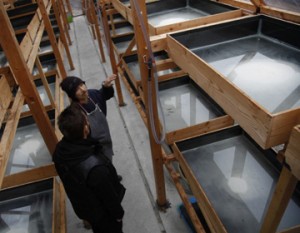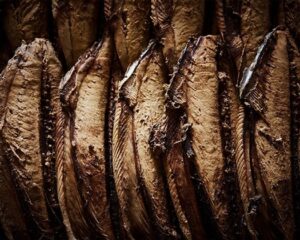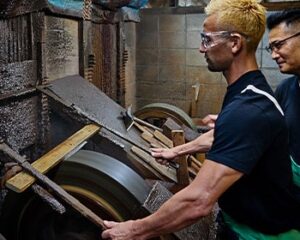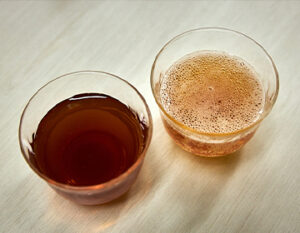Located in Tosa City, Kochi Prefecture, this bonito flakes manufacturing company has won the Minister of Agriculture, Forestry and Fisheries Award, and is well known to those in the know.
It is said that the tradition of making dried bonito flakes spread from Tosa City.
They preserve the taste of Tosa-bushi in the original place of dried bonito flakes making.
Takeuchi Shoten’s traditional dried bonito flakes compete with high quality.
When one thinks of bonito, one thinks of Kochi, and when one thinks of Kochi, one thinks of bonito, so we went to Takeuchi Shoten in Tosa City. Takeuchi Shoten is a well-known manufacturer of dried bonito flakes that won the Minister of Agriculture, Forestry, and Fisheries Award at the 2012 National Dried Bonito Flakes Fair. The company’s name is well-known throughout Japan, and many chefs come to the store to buy their dried bonito flakes for the taste of the soup stock they produce.
Kochi and Kagoshima are famous for katsuobushi, but Kagoshima is by far the largest producer. Kagoshima produces 74% of all bonito flakes in Japan, and Shizuoka 25%. Only 0.6% is produced in Kochi,” says Taichi Takeuchi, senior managing director of Takeuchi Shoten.
Quality over quantity. While preserving traditional techniques, Takeuchi Shoten pursues high quality and taste. You can feel their pride as the originator of katsuobushi production.
Traditional dried bonito flakes and its making process
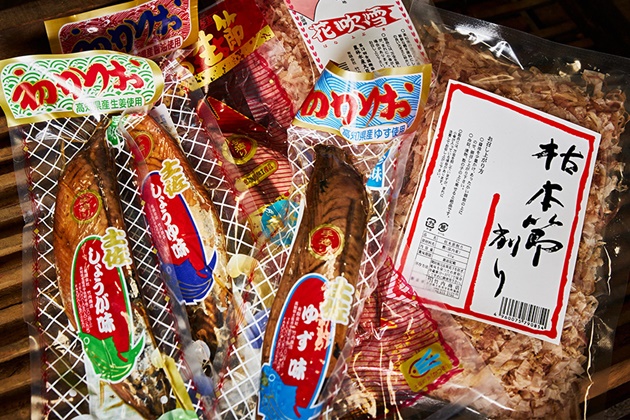
The tradition of making dried bonito flakes spread from Tosa. Many people moved to Makurazaki and passed on their skills, and until a short time ago, Tosa dialect was sometimes used in Makurazaki,” says Executive Director Takeuchi.
If the quantity of Tosa-bushi is small, there is no other way but to produce quality Tosa-bushi, so Takeuchi Shoten continues to produce katsuobushi with the traditional flavor, color, and shape. The recipe is the very essence of their commitment.
There are three types of dried bonito flakes: “Ara-bushi,” “Kare-bushi,” and “Hon-kare-bushi. Ara-bushi” is made by removing the bones one by one from boiled bonito and smoking it for about a month, which gives the bonito a charred black color. This “ara-bushi” is what is usually sold. Kare-bushi” is made by fermenting and aging the dried bonito in a room called “muro,” and then drying it in the sun. The kare-bushi produced at Takeuchi Shoten, however, is made by repeating the process of kabi-ing and sun-drying, which takes nearly half a year to complete. The result is “honkare-bushi,” which is full of flavor and richness.

The company ‘s mission is not to preserve tradition, but rather to produce the best tasting bonito flakes possible. We don’t think that just because it’s “authentic” and we put a lot of time and effort into making it, that’s enough, ” says Takeuchi.
Japanese food is now attracting attention from around the world. The flavor of dried bonito flakes is at the core of the history of Japanese food. The people who preserve the “real” taste support the foundation of Japanese food.
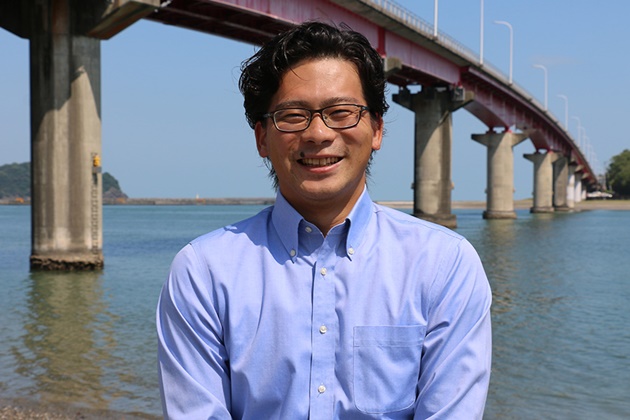
More than preserving tradition, we place importance on how to make delicious dried bonito flakes. We don’t think that just because it is authentic and we put a lot of time and effort into making it, that makes it okay. We are happy if you can enjoy the pure taste of our dried bonito flakes.
